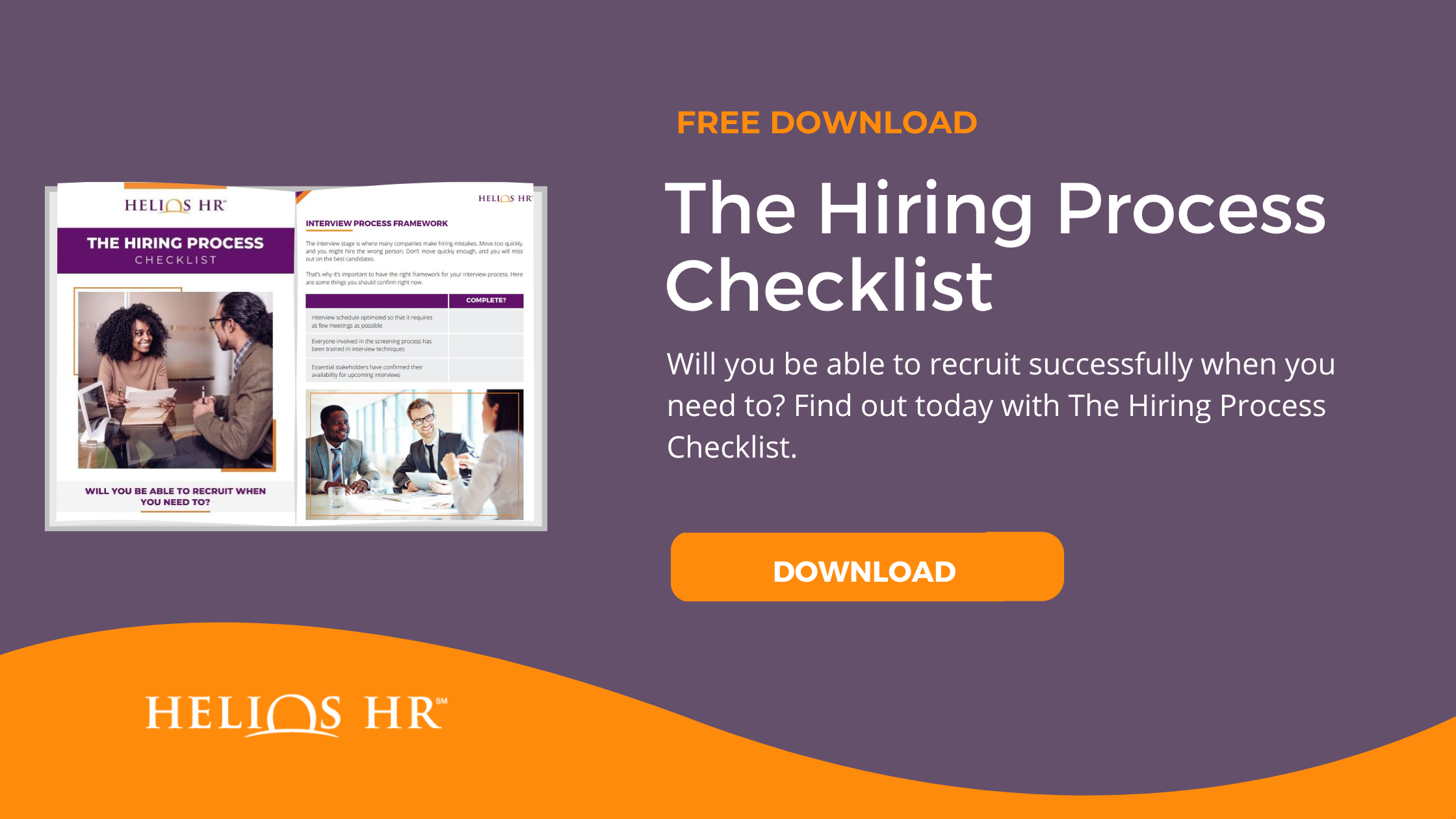By: Paul Davis on April 5th, 2016
How to Get the Most ROI From Your Recruiting Function
As an HR consultant, almost every leader I have worked for immediately understands the critical importance of recruiting. Yet, throughout these interactions, I’ve been puzzled why a function like recruiting, which is so universally accepted as being essential is generally given such little focus and not nearly leveraged like other key business functions.
It's been my experience that initiatives within the recruiting function are almost always reactive. General enhancements, surge support, and third-party recruitment assessments are typically conducted to address deficiencies as opposed to seizing opportunities. Having effective recruiting capabilities and processes can do three major things simultaneously:
- It can reduce the time to hire;
- It can generate more business revenue (depending upon the business, of course); and
- It can be the key business differentiator when it comes to finding qualified candidates in a hot market.
Reducing the time to hire metric is important not only to get qualified talent in the door quicker but with an effective team and process in place, it can greatly reduce the amount of time your hiring managers and recruiters spend as well. To the same point, if these open reqs are positions that directly impact your revenue, you want to get them hired and onboarded in a timely manner. In today's market, employers must move fast and they must be intentional about creating a memorable experience to attract and hire key talent. And I think we can all agree that talent is so often what sets a company apart from its competitors.
This brings me back to recruiting-related opportunities that frequently go unrealized. I think that these opportunities are often missed because most of them involve investing upfront before there's really a problem or pressing need. Typically, leaders don't want to lean on outside recruitment firms until they absolutely have to and then it's a rush to the finish line process. However, it is with these upfront investments that your recruiting function can have a return that is far greater than the expenditure and be intentional.
The list below captures a number of scenarios in which an organization with proactive leadership with a strategic mindset can get a major return on its recruiting-related investments.
5 Benefits of Partnering with an Outsourced Recruitment Firm
- Handle surges in hiring: As a previous HR practitioner at a company where I was responsible for HR and recruiting, I can attest from experience that the amount of time required to fill multiple positions can quickly expand beyond what a single person can handle. When I needed help to keep up with the hiring needs of my organization, I was always hesitant to reach out to traditional third-party staffing firms due to the inherent distance between the staffing firm and my organization. They were, after all, two different companies. A solution to this dilemma is in the form of introducing an outsourced recruiting model that embeds a recruiting professional who speaks ‘for’ your organization as opposed to ‘at’ your organization. This creates a seamless and positive experience for prospective candidates, which translates into your organization as a more attractive landing place for them. An outsourced recruiting model is a flexible fit over the short or long term, and it avoids raising your fixed costs by bringing on additional recruiters as direct hires.
- Step in when your organization doesn’t have the necessary tools or hiring resources: It’s extremely common for companies to not need or have a hiring infrastructure in their early stages of development. You can get by with a lack of tools, processes, and resources until your company hits the level of growth that you’ve been aspiring to reach. Suddenly you have a serious staffing situation on your hands. To avoid hitting a growth speed-bump due to an inability to bring on staff in an efficient and effective manner, you can partner with an organization that uses an outsourced recruiting model so that you can use their existing infrastructure and expertise. This allows you to set up a hiring process that is customized to your needs and maintains your organization’s identity.
- Design an employer branding and talent acquisition strategy that aligns with your hiring goals: Qualified candidates that are interested in working for your organization aren’t easy to find. To effectively attract candidates you need to communicate that you have a role that matches their interests and why they would want to become an employee at your company. Just about every client that I speak with thinks that their company offers a unique culture and set of opportunities to employees... and they’re right. The problem is that most of those organizations don’t have a strategy to communicate that to prospective candidates. Using recruiting professionals to develop an employer branding and talent acquisition strategy ensures that your organization’s message is being heard by the audience that you’re targeting. This includes reviewing your externally-facing recruiting-related sites, your online presence at career sites and communities, and the descriptions you use to market positions.
- Perform a recruiting function assessment: Assessments typically focus on compliance, general efficiency, and effectiveness. There are a lot of opportunities for companies to run afoul of government regulations when they’re filling positions. This is especially the case for government contractors, and even more so with government contractors who have over 50 employees. Using professionals who are knowledgeable about recruiting-related compliance can work with your organization to create OFCCP-compliant processes in place that reduces your organization’s liability. Additionally, a lot of processes at organizations evolve over time, and can oftentimes grow into something that in no way resembles what you would design if you could just start from scratch. This is certainly also the case with recruiting processes. If you think this might be the case at your organization, you can use a recruiting expert to work with your organization to assess and design the recruiting department’s structure and processes. Recruiting professionals are able to identify process redundancies, find opportunities to more effectively elicit requirements, accurately screen candidates, and leverage your technology. The list goes on.
- Develop, gather, analyze, and take action based on metrics: Is your recruiting function working well, or not? And what makes you think that; a hunch, a lack of complaints, or hard data? Using a recruiting expert who can understand your organization’s needs and create a metrics program can have an outsized impact on your bottom line. Analyzing metrics regarding your recruiting function allows you to identify inefficiencies in the process and better predict the time and effort required to fill positions in the future. Knowing how much time and effort goes into filling a position allows you to carefully augment your recruiting levels so that you’re not under or over-staffed.
When you stop to think about how many employees participate in the recruiting process, and how much time they spend interacting with the process, it’s easy to understand how a company’s bottom line can be positively impacted by making the recruiting process more efficient and effective. When you combine that with the benefits of getting revenue-generating employees on board more quickly, your returns can be substantial.
In summary, by teaming with an external recruiting firm, there are many options to proactively impact a growing company’s recruiting and hiring. Knowing when to make these types of strategic investments in your firm’s recruiting function can pay dividends in the future.




